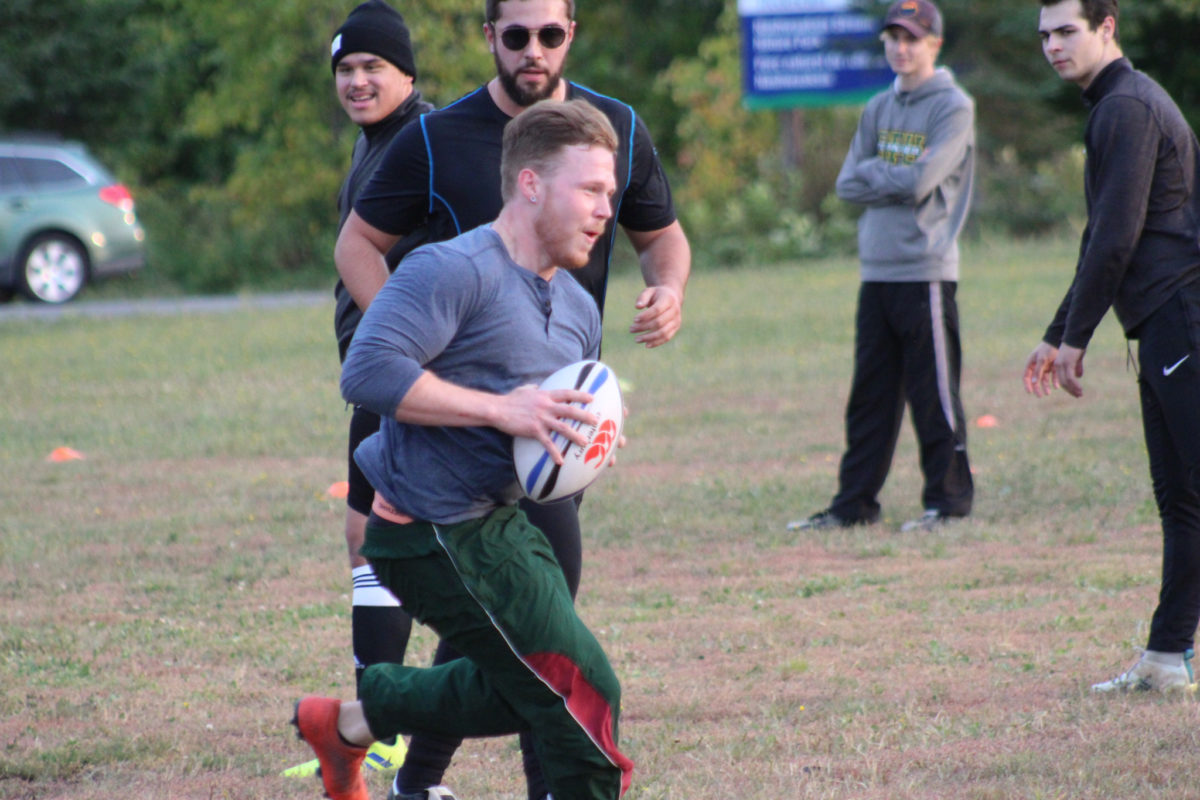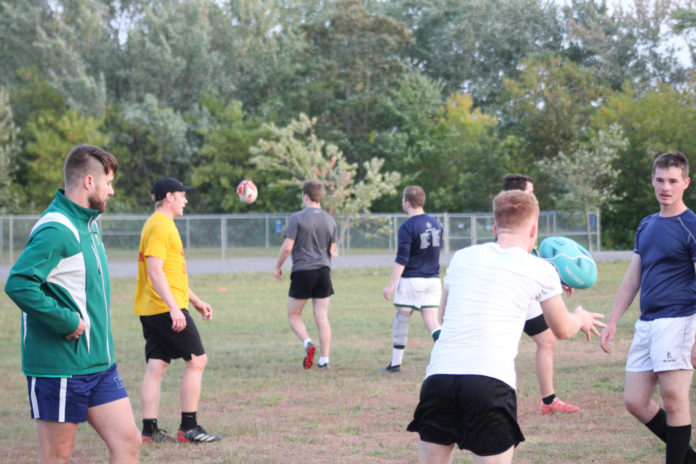
Training sessions at St. Thomas University have a different vibe for the 2020-21 season. Instead of starting practice with a usual jog around the field, players began with screening questions to check for symptoms of COVID-19. Each player had to wear a mask while heading into practice at the Scotiabank South Field. Then, they were required to sanitize and get ready in their stationary area, set up with practice cones.
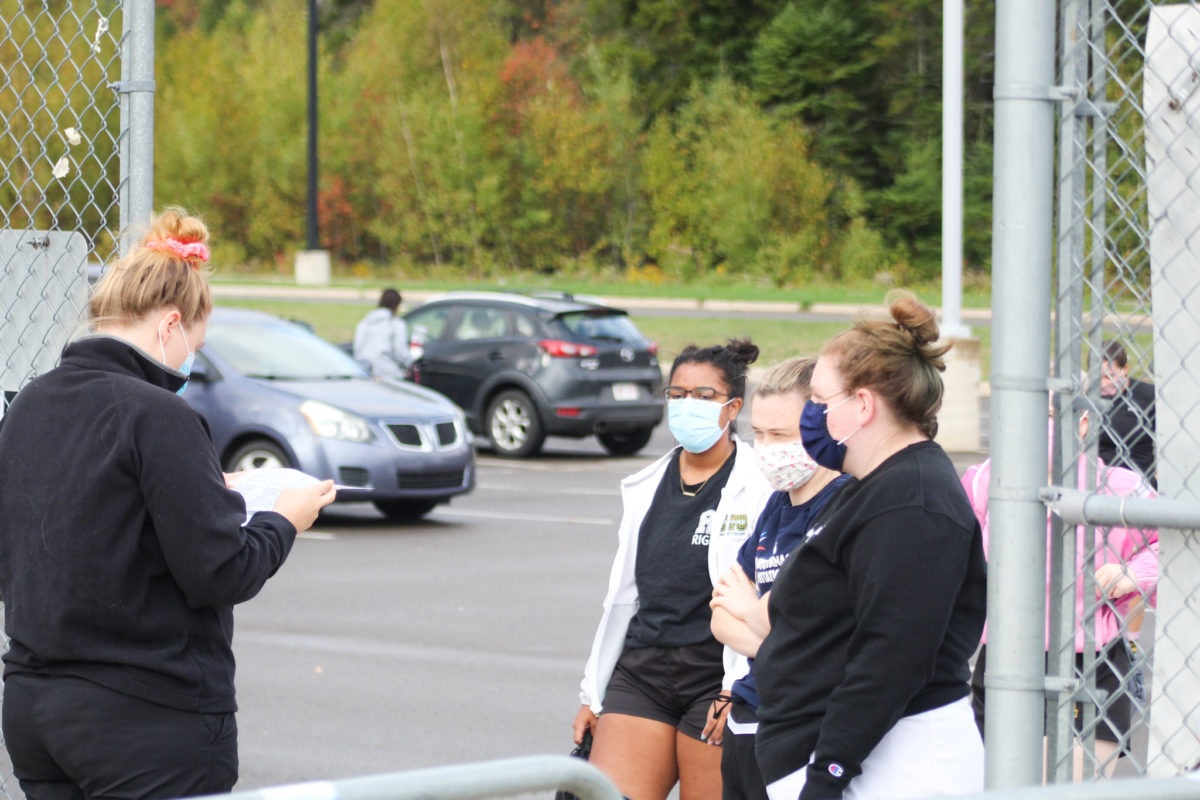
Usually, anyone is able to spectate a practice. But during these times, only players and coaching staff are allowed in. I had to get permission from head coach Nathan Bustard to attend. I was required to do the same as the coaches and players — take the screening test, sanitize and keep my distance while wearing a mask.
Bustard said COVID-19 has had an obvious effect on the team’s day to day operations, which includes having to go through a process of steps before even lacing up a pair of cleats.
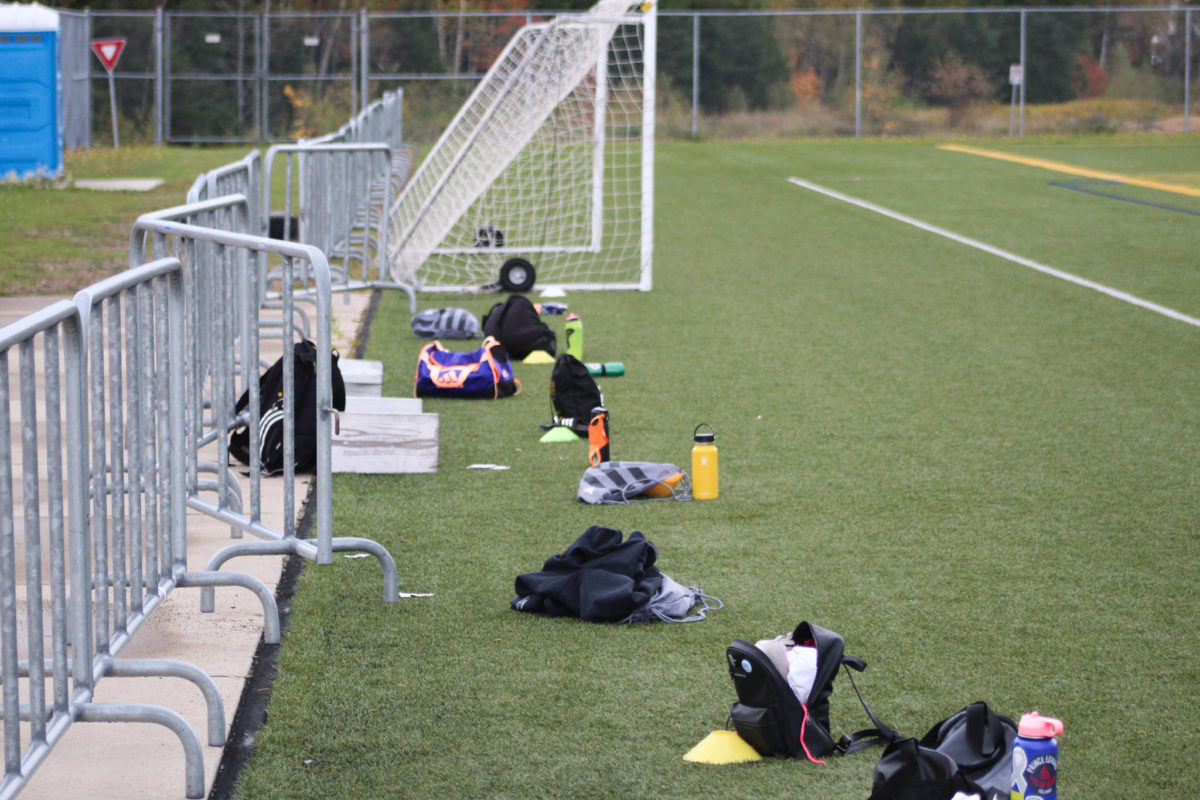
“We were lucky that the New Brunswick Rugby Union and STU had developed some really good operational plans,” said Bustard.
Players then took a jog around the playing area, while maintaining a six-feet distance. Other than this, practices have stayed normal for the women’s rugby team, going through individual skills and plays to improve. But whenever possible, Bustard had his players social-distance. Players were in their own bubble when they practiced together.
I wasn’t able to get into the women’s soccer practice, as the fence was closed and didn’t allow any spectators in the bleachers or outside the fence. But that didn’t stop parents from lining up outside the fence doors, waiting for their children’s soccer practice to start.
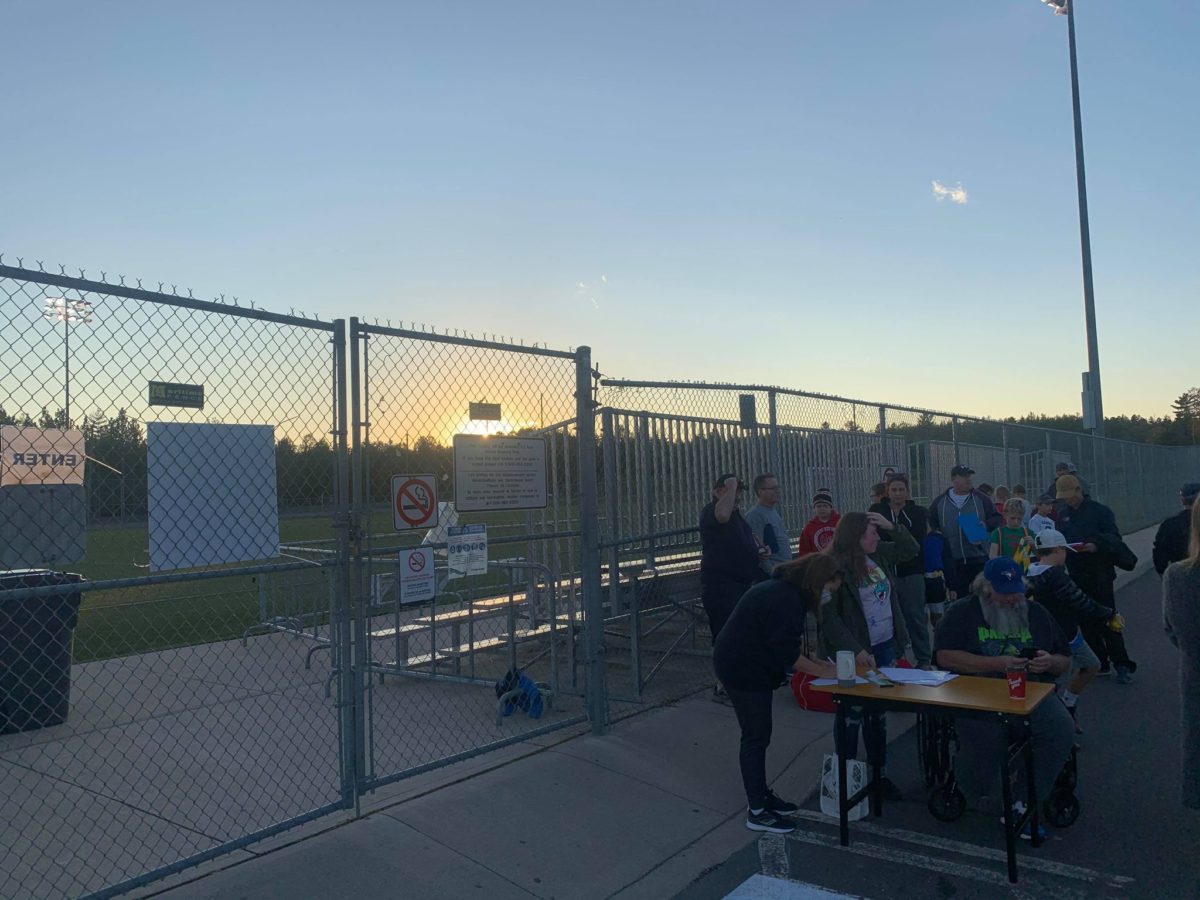
Michelle DeCourcey, women’s soccer head coach, said her team is following all the guidelines given from the Soccer N.B. return to play committee. The team is currently in the third phase of return to play, which allows them to have low contact games and drills.
“These rules make scrimmage look different,” she explained. “Throw-ins have turned to kick-ins and heading the ball is not permitted, along with tackling and certain types of close contacts.”
DeCourcey said players must also self-screen before practice, as well as sanitize before going onto the field.
When checking up on the men’s rugby team, things were a little different. I was easily able to get into Loyalist Field, even if I showed up without notice. I was welcomed by the players, who were mindful by keeping their six-feet as well. When I arrived, they were playing a game of touch-rugby, where a two-hand touch on the body forces the player to stop where they are as another player takes the ball from there.
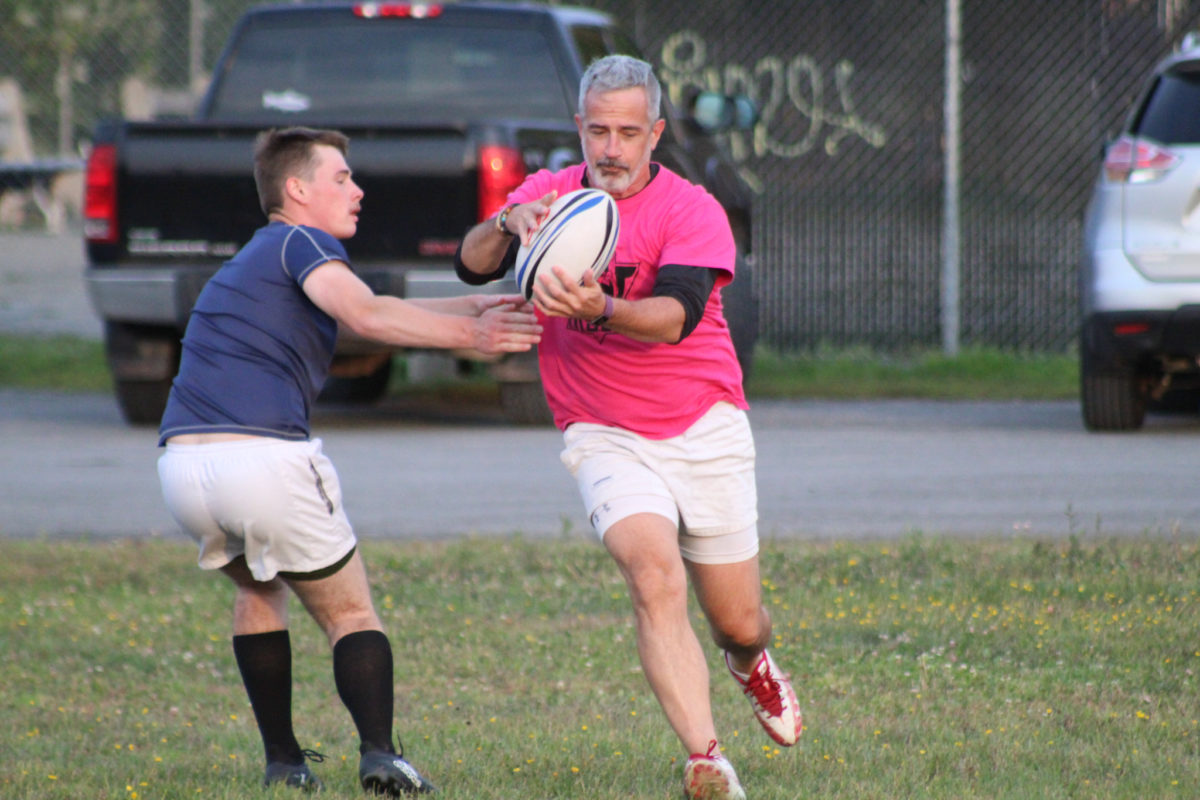
As head coach Matt Coffey called the game to be over after team captain Zach Klassen went down with an injury due to a knee-on-knee collision, players headed to their stationary areas, using the same format as the women’s team. The players brought out their own water bottles, rather than the usual team bottles where a player is assigned the responsibility of bringing over 20 bottles for the team.
Low-volume chatter was passed around the players, who expressed their concerns for their captain.
“What happened?” One player asked.
“I think it was a knee-on-knee,” another said, as the scream of pain came out of Klassen on the other end of the field. The coaches surrounded him, backs turned to the players as they slowly merged out of their stations, not realizing they were slowly going within each other’s space.

“Alright, bring it in,” Coffey shouted to his squad.
The players started to form a huddle.
“And keep your distance,” he said in a lower, unconfident voice. Players followed his orders and expanded the circle, as each player looked around, judging the distance they had between those next to them.
Coffey explained the next drill, leaving players to find a partner to work on some passing drills, while Klassen stretched out his legs on the side.
